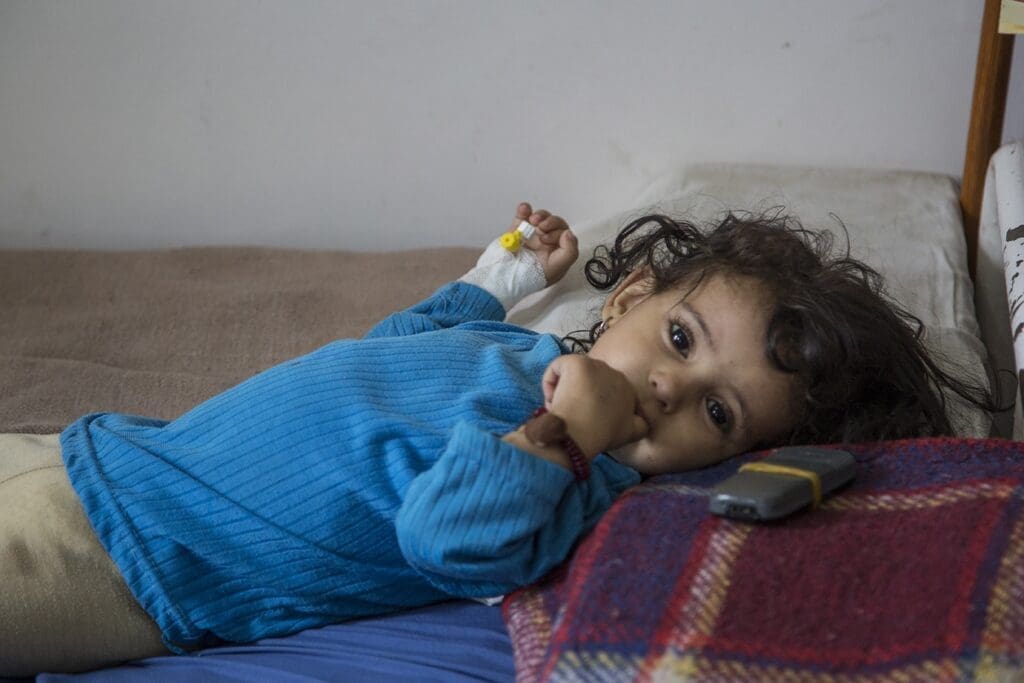
Hunger and Hope in Yemen
In July 2018, a World Food Programme (WFP) communications team found their way inside Yemen to document the hunger crisis in areas that rarely see the light of day. They captured photos and stories from the front lines, including the port city of Hodeidah where fighting has intensified and Saa’da in the rural northwest. Two-thirds of the Yemeni population, or 18 million people, are worried about their next meal while eight million of them are precariously close to famine after a 25 percent increase in severe hunger over the last year.
Your support is helping WFP reach the country’s most vulnerable Yemenis who are entirely reliant on external food assistance.
Saa’da
Saa’da, on the border with Saudi Arabia, is the heartland of the Houthi resistance and one of the areas most affected by the conflict.
Food markets, municipal buildings and transport have been destroyed from the fighting. The rural areas of Saa’da have always had some of the highest rates of malnutrition in Yemen but the destruction of infrastructure and the displacement of people in the area have made child malnutrition worse. Many children like those pictured, including 2-year-old Batol Yahira, have been taken to hospitals in the area for treatment for malnutrition.
Bombing has destroyed many neighbourhoods in Saa’da: Several districts in the city are strewn with wreckage and debris following ground fighting between armed groups.
WFP food assistance prevented areas like these from falling into full-blown famine in 2017 by providing food assistance for more than seven million people per month since August 2017. Now WFP needs to scale up and sustain assistance for eight million people.








Hodeidah
Intensified conflict is making the humanitarian situation in Yemen worse, particularly in Hodeidah—the key port which is a lifeline for millions in the northwest. WFP estimates that the upsurge in fighting in and around Hodeidah could result in up to 1.1 million people being displaced or trapped. These families urgently need emergency food assistance to meet their immediate needs.
WFP is working around the clock to provide emergency rations to people fleeing violence, including in areas below like the Al Marawiah district. The humanitarian agency provides families with food including beans, peas and tuna while organizations like UNICEF provide sanitary kits. Many people have been displaced from their homes to different parts of the city without income or means of survival except for WFP food aid. They are increasingly desperate and afraid as the conflict heats up around the city.
Any disruption to the functioning of the port in Hodeidah will hamper critical commercial and humanitarian flows of food, fuel and medicine. The two Red Sea ports of Hodeidah and Saleef are a lifeline for roughly 19 million Yemenis in the northwest. Yemen imports over 90 percent of its food, of which 70 percent is channeled through these two ports.









This year, WFP began a school meals program to provide nutritious, ready-to-eat food to 140,000 school children. With the start of the new school year in September 2018, WFP hopes to assist 600,000 students a month. WFP will also begin providing cash assistance in areas where markets are working well to allow up to 1 million people to have greater choice of food.
As the conflict continues, more people in Yemen risk falling victim to hunger and disease. One child dies every 10 minutes in Yemen due to preventable diseases.
You can make a difference today.




